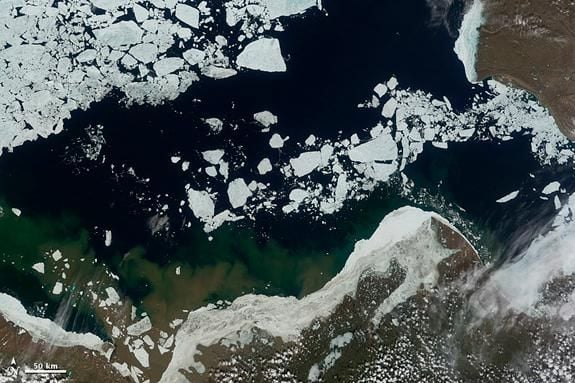Miners, Drillers Push Into Void Left By Melting Arctic Ice
The opening of parts of the Arctic Ocean each summer, and the melting of surface ice on northern landscapes, driving a gold rush into the Arctic frontier
/https://tf-cmsv2-smithsonianmag-media.s3.amazonaws.com/filer/2012080102100608_01_2012_beaufort-2006.jpg)
Arctic ice is melting, and it’s melting fast. As Andrew Freedman writes for Climate Central, Arctic sea ice loss this year is tracking along with the record melting seen in 2007.
The general consensus among Arctic climate and sea ice specialists is that manmade emissions of greenhouse gases, such as carbon dioxide, are a major factor behind the recent decline, but natural climate variability is also playing a role. The computer models that scientists use to simulate the climate system have consistently underestimated the speed and scope of recent sea ice trends.
The opening of large parts of the Arctic Ocean each summer, and the melting of surface ice on northern landscapes, is driving a modern gold rush into the Arctic frontier. Shell Oil Co. is slated to open two off-shore oil wells along the increasingly ice-free Alaskan coastline, one in the Beaufort Sea and the other in the Chukchi Sea. Originally, Shell had planned five such wells.

Coming on the heels of the news of this year’s anomalously-large melting of Greenland’s vast surface glaciers, The Guardian reports that European leaders are looking to mine the island’s vast untapped resources.
According to geological estimates, below Greenland’s vast ice sheet could lie enough rare earths to satisfy at least a quarter of global demand in the future.
The vice-president of the European commission, Antonio Tajani, has led the push, forging an agreement with Greenland to look at joint development of some of the deposits. The agreement will extend beyond rare earths to metals such as gold and iron, and potentially to oil and gas, which are abundant in the waters around the island.
More from Smithsonian.com:
Stunning View of Arctic Could Be Last of its Kind
/https://tf-cmsv2-smithsonianmag-media.s3.amazonaws.com/accounts/headshot/smartnews-colin-schultz-240.jpg)
/https://tf-cmsv2-smithsonianmag-media.s3.amazonaws.com/accounts/headshot/smartnews-colin-schultz-240.jpg)